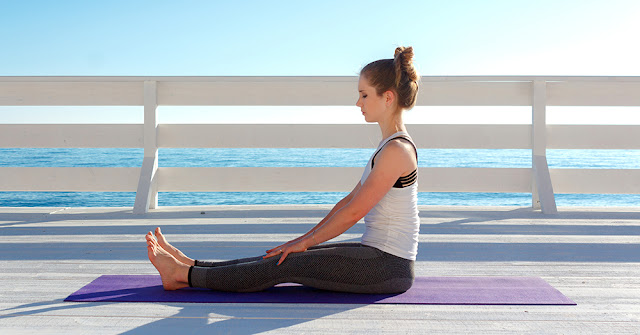Creating Harmony Through Balance
Do you remember the words …“Sit up straight … pull your shoulders back … and for crying out loud, DON’T SLOUCH!”
Imagine your mother watching you doing any one of the following: Sitting
in front of a computer monitor. Snuggling up with a favorite book. Playing
video games. Sitting on the floor, in a chair, on bleachers, at church, or in a
theatre. Standing in place. Waiting in line. Watching TV. Fishing. Driving a
car. Or…doing anything during your normal day that requires you to be in
one place for a period of time.
Worse yet, imagine me watching you doing these things!
As a physical therapist, I talk about the importance of good posture as a way
of maintaining good musculoskeletal health. This blog entry is to educate you
on the relationship between good posture and good musculoskeletal health (I
didn’t make this up; they are honestly interrelated). Everything in our bodies
is connected somehow, and, at least philosophically speaking, one thing can
have an effect on everything else.
Know that YOUR posture is as individual as your day, but I can address global
concepts here that are good for every woman to keep in mind. Words like
balance, tension, and harmony all come into play. Let’s take a look at them one
at a time.
Balance – Think about your daily activities and habits. Are they
“balanced”? In other words, do you spend a measured amount of time
standing in one place? Ask yourself these questions:
- Do you spend time standing at a checkout counter or standing in one position at an assembly line?
- Do you spend any time strolling or walking?
- Do you spend a measured amount of time in an office chair?
- How much time do you spend driving or riding in a car?
Furthermore, when you think about these daily activities and habits, does one in particular outweigh the others? If the answer is “Yes”, is there a way that you can find or make more balance between them?
You see, our bodies are not meant to be in one place for a lengthy period of time, and our bodies were certainly not designed to be in one place or position for the majority of the day. Sometimes, it’s challenging to look for and find balance for our body positions during the day, but if you can achieve it, it’s well worth it!
Tension – Now let’s take our balance concept one step further. If you are balanced, then you are changing your position frequently throughout the day. If you are not changing your position at least once every 50 minutes, then you are NOT balanced, and therefore you are probably under some physical tension. Musculoskeletal tension to be exact, involving not only our muscles, bones and joints, but our connective tissues like tendons, ligaments and fascias, and our nerves – right down to the cellular level.
This amounts to lots of layers of tension. This tension builds over time; hours upon hours, and sooner or later your body will retaliate. Usually that retaliation comes in the form of pain.
Some common types of pain that comes from chronic tension include:
- Headaches
- Neck pain
- Lower back aches
- Upper back pain
- TMJ pain
- Pinched nerves
- Intervertebral disc herniation
- There are also numerous medical conditions that are exacerbated by chronic musculoskeletal tension.
Harmony – How can we take our concepts of balance and tension in order to create harmony? We can actively work our bodies thru our awareness of what we are doing, and how we are doing them. In other words, if I am standing in line for an hour, I can be aware of my legs. Am I standing with all of my weight on one foot, or am I shifting my weight every few minutes? Am I locking my knees, or am I using my strong leg muscles to support me? Is my pelvis tilted way forward so that my butt sticks out, or am I using my powerful hip muscles to line up my spine with my pelvis? Where are my shoulders in relation to my head? Are they forward and rounded? Or are they comfortably lined up with my ears? Is my head forward in relation to my body? Or is it lined up, too?
You see, we can use our body awareness to create harmony and balance in order to achieve the best posture for the current situation. By doing so, we can reduce or completely eliminate pain resulting from chronic musculoskeletal tension.
Through this effort of creating harmony through balance and awareness of tension, we can optimize our posture, and therefore our musculoskeletal health, on a daily basis. Theoretically, this will lead to a reduction in any chronic pain we have as a result of the poor postures we used to maintain during the day. For everything in our body is connected, in some way.
Michelle Landsverk is a Doctor of Physical Therapy at PT Center for Women, 3232 Ballard Road, Appleton, WI 54911. To make an appointment with Michelle call or text 920.729.2982.
PT Center for Women is one of the only physical therapy centers in Wisconsin that specializes in pelvic pain and pelvic muscle dysfunction, offering women of all ages comprehensive evaluation and treatment for their physical therapy needs.




Comments
Post a Comment